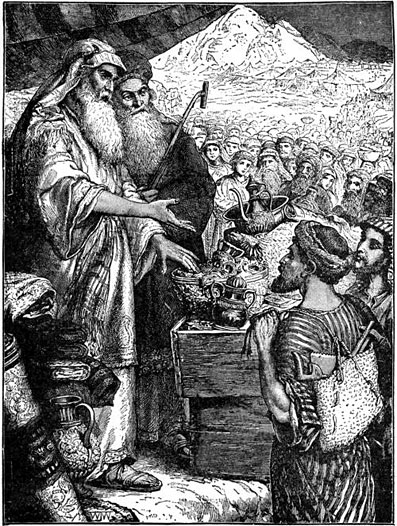Jul
16
2009
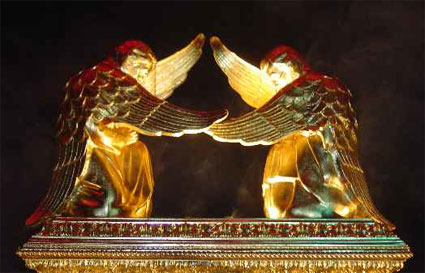
“And she saw two angels in white sitting,
one at the head and the other at the feet,
where the body of Jesus had lain.”
- John 20:12
Two Witnesses
The father of the English backpacker who was lost in the Blue Mountains wrote in the visitors book at the hotel where he stayed. He wrote that he was going briefly back into the bush to carve a memorial to his son into one of the rockfaces. Thankfully, as he waited for his flight home to the UK, his son walked out of the wilderness yesterday suffering from hunger and exposure, but alive. As I have discussed in this series [1], the Bible is full of memorials to important events.
Getting God’s people out of the wilderness is a legal procedure. A minimum of two witnesses is required. First, there are two preachers who spy out the enemy and warn them of impending judgment. The feast pattern consistently puts this at “Trumpets”, which helps us identify some of its more subtle appearances:
Continue reading
Comments Off | tags: cherubim, David, Lot, Moses, Stigmata, Two witnesses | posted in Biblical Theology, The Last Days
Jul
15
2009
or Limited Redemption
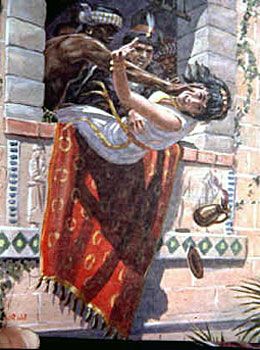
“For if we sin wilfully after that we have received the knowledge of the truth, there remaineth no more sacrifice for sins” - Hebrews 10:26
NOTE: THIS POST HAS BEEN REMIXED AND INCLUDED IN GOD’S KITCHEN.
Did Christ die for all? If Jesus’ blood was not shed for all, how can it possibly be a sin to “trample it underfoot” as the unbelieving Jews did? (Hebrews 10:29)
Elijah set up a 12 stone altar as a substitute for Israel. The sacrifice ascended to the Lord (goat #1) and the prophets were slain (goat #2). Thus, the Baal worship was atoned for.
But Jezebel trampled this sacrifice underfoot, and continued in sin. In retaliation, she slew the prophets that Obadiah had hidden. Consequently she was trampled underfoot. (2 Kings 9:33).
The New Testament history, including the Revelation, follows this pattern. Jesus set up a new 12 apostle priesthood and Israel slew Him and them. Consequently, Israel was slain, as Jezebel. That is the context of the Hebrews passage, and the meaning of the harlot of Babylon.
Continue reading
Comments Off | tags: Ark of the Covenant, Atonement, Calvinism, High Priest, James Jordan, Jezebel, Postmillennialism, Revelation | posted in Biblical Theology, The Last Days
Jul
14
2009
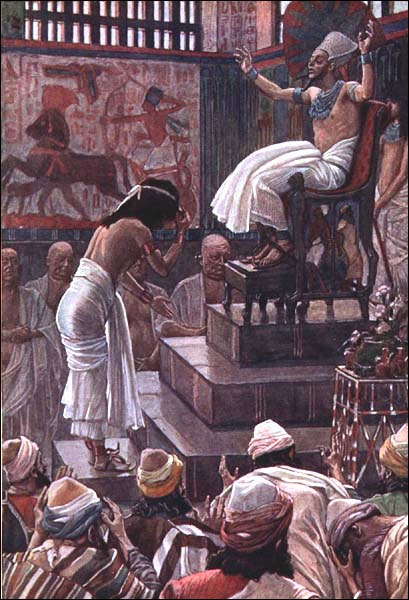
or Theonomy in the Bible
“…instead of Moses and Aaron challenging the powers that be, we have Herodian preachers crying “Peace, peace” when there is no peace. Nathan is not qualified to confront David because Nathan himself has been sleeping around.”
In his post Christianity as Comprehensive Cultural Tribunal?, timsmartt questions the validity of philosophy’s self-appointed role as an unbiased cultural referee and wonders whether Christianity should take that role:
Continue reading
Comments Off | tags: Aaron, Abraham, Against Hyperpreterism, antichrist, Daniel, Esther, Herod, Jethro, John the Baptist, Korah, Melchizedek, Mordecai, Moses, Nathan, Philosophy, Postmillennialism, Solomon | posted in Biblical Theology, The Last Days, The Restoration Era
Jul
6
2009

If we don’t get Genesis right, we’ll get much of the Bible wrong. In Through New Eyes (PDF), James Jordan identifies a three-level “cosmos” in the Creation, which is reflected on the earth. There is the Garden Sanctuary, the Land of Eden, and the Outlying Lands, or Garden, Land and World.
This is reflected, not only in the ark of Noah, but also in the Tabernacle. The image is dual, one in heaven and one on earth:
Continue reading
Comments Off | tags: Against Hyperpreterism, Altar, Babel, oikoumene, Paul, Tabernacle | posted in Against Hyperpreterism, Biblical Theology, The Last Days
Jul
3
2009
“Be meticulous to present yourself for the praise of God as an unashamed workman, cutting the word of truth in a straight line.” (II Timothy 2:15)
Is this verse simply teaching that if we “divide up” the Scriptures correctly, we’ll get an AWANA[1] merit badge from God? Hardly. It is flanked by condemnations of those who fight over the Scriptures to no profit, and those whose vain babblings are gangrenous.
Paul speaks of a soldier and a farmer, and then a productive workman. Paul is concerned about building saints and churches, and they are built by a straight and true cutting of the word. Like most of Paul’s statements, there is a very long, fully-loaded freight train of Old Testament history and typology right behind it, and it’s coming right at you, right now.
Continue reading
Comments Off | tags: Darius, David, Esther, Ezekiel's Temple, Nebuchadnezzar, New Jerusalem, oikoumene, Peter, Peter Leithart, Postmillennialism, Revelation, Solomon, Stigmata, Temple, Totus Christus, Worship | posted in Biblical Theology, Christian Life, The Last Days, The Restoration Era
Jun
30
2009
 “And their dead bodies will lie in the street of the great city which spiritually is called Sodom and Egypt, where also our Lord was crucified.” – Revelation 11:8
“And their dead bodies will lie in the street of the great city which spiritually is called Sodom and Egypt, where also our Lord was crucified.” – Revelation 11:8
Revelation 20 makes it clear that the “second death” is the lake of fire. But an analysis of the literary structure of Revelation brings out an interesting factor.
Continue reading
Comments Off | tags: Against Hyperpreterism, Armageddon, Atonement, Azal, Egypt, Feasts, James Jordan, Passover, Peter Leithart, Revelation 20, Smyrna, Sodom, Systematic typology, Tabernacle | posted in Biblical Theology, The Last Days, Totus Christus
Jun
29
2009
James Jordan’s work on the Jew-Gentile oikoumene set up in Daniel has far reaching implications.1 Peter Leithart writes:
“Yoder argues that from the time of the Babylonian captivity, the Jews developed a proto-”free church” model of community life. True in some respects. Jews didn’t have their own polity. But I’ve got doubts if that’s a fair characterization of Jews in and after the exile.
Continue reading
Comments Off | tags: AD70, Archaeology, Daniel, Esther, Exile, Hellenism, Mordecai, Nehemiah, oikoumene, Peter Leithart, Tertullian, Yoder | posted in Biblical Theology, Quotes, The Last Days, The Restoration Era
Jun
25
2009
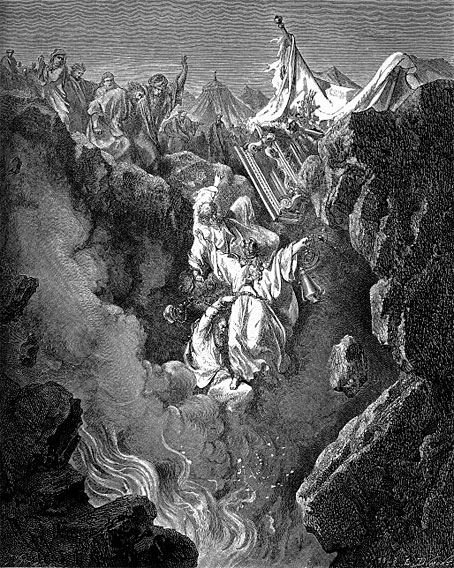 “Let no one deceive you by any means; for that Day will not come unless the falling away comes first, and the man of sin is revealed, the son of perdition.” (2 Thessalonians 2:3)
“Let no one deceive you by any means; for that Day will not come unless the falling away comes first, and the man of sin is revealed, the son of perdition.” (2 Thessalonians 2:3)
Non-dispensationalists are often accused of “Replacement Theology,” that is, the church replaced Israel. But we find in the Old Testament many examples of the same process prefiguring what the people of God went through in the first century. It is not replacement, but transformation.
Continue reading
Comments Off | tags: Aaron, AD70, Caleb, Ezra, James Jordan, Judaisers, Korah, Moses | posted in Biblical Theology, Quotes, The Last Days
Jun
23
2009
The serpent poured water like a river out of his mouth after the woman, to sweep her away with a flood. But the [Land] came to the help of the woman, and the [Land] opened its mouth and swallowed the river that the dragon had poured from his mouth. (Revelation 12:15-17)
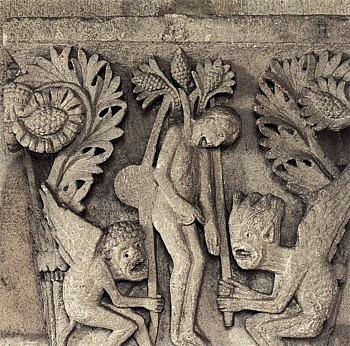 Satan mimicked the expanding gospel dominion with counterfeits at every step. Here, not only did he forge the water chariots of the true Temple (a false baptism), he would bring Noahic “rest” to the Land by destroying God’s mighty men. He would bring about his own twisted “new earth” by deluging the church with bogus teaching.
Satan mimicked the expanding gospel dominion with counterfeits at every step. Here, not only did he forge the water chariots of the true Temple (a false baptism), he would bring Noahic “rest” to the Land by destroying God’s mighty men. He would bring about his own twisted “new earth” by deluging the church with bogus teaching.
Continue reading
Comments Off | tags: AD70, Esau, Herod, Judas, Korah, Numbers 5, Satan, Scavengers, Temple | posted in Biblical Theology, The Last Days, Totus Christus
Jun
18
2009
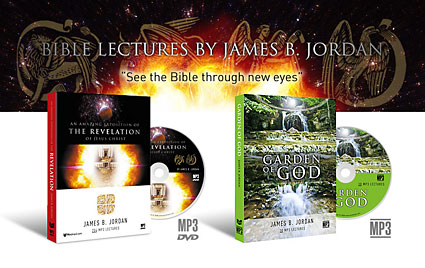 David Chilton’s The Days of Vengeance gets downloaded from my site over 30 times a day (add that up for three years!). It’s a great commentary, but Jordan’s lectures use the Bible instead of Josephus to interpret Revelation. Chilton was peeping through the keyhole. Jordan throws open the door. These are cutting edge and, I believe, indispensable for anyone with an interest in preterism.
David Chilton’s The Days of Vengeance gets downloaded from my site over 30 times a day (add that up for three years!). It’s a great commentary, but Jordan’s lectures use the Bible instead of Josephus to interpret Revelation. Chilton was peeping through the keyhole. Jordan throws open the door. These are cutting edge and, I believe, indispensable for anyone with an interest in preterism.
Available here, or from www.wordmp3.com
Days of Vengeance is on this page (near the bottom).
Comments Off | posted in The Last Days





